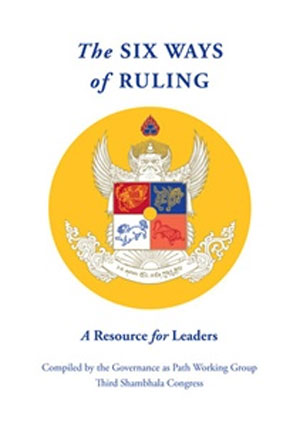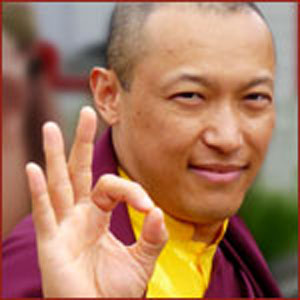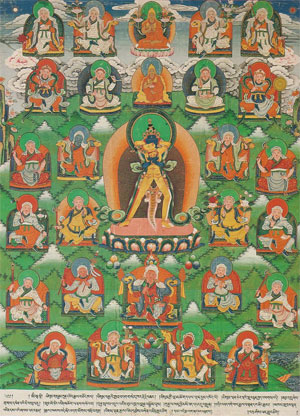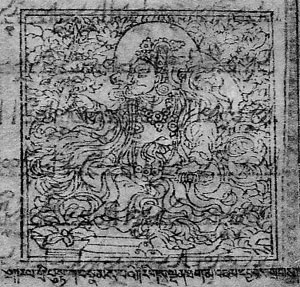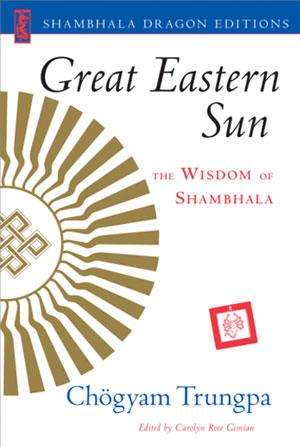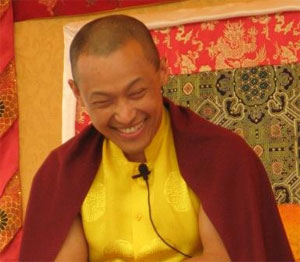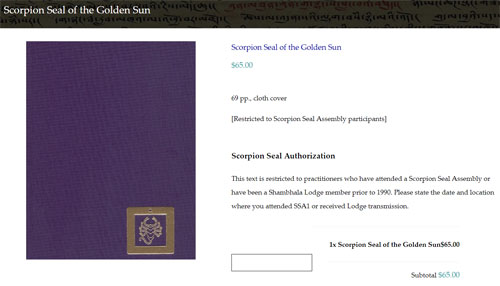Re: Former teacher at Boulder's Shambhala accused of sexuall
The first time I met His Majesty Chögyam Trungpa Rinpoche
by Leslie Hays
2017
NOTICE: THIS WORK MAY BE PROTECTED BY COPYRIGHT
The first time I met His Majesty Chögyam Trungpa Rincophe was at encampment in the late summer of 1983. I was attending a dathün (month long sitting practice) at Rocky Mountain Dharma Center. This retreat is supposed to be mostly silent, but I was never good at holding my tongue. During the retreat, some of my new friends and I plotted a raid on encampment, which was a military-style program that was simultaneously happening on the land. We decided to raid encampment and attempt to steal the flag. Our plan was simple: we could create a diversion and while the attention was on us, our cohorts would sneak around the perimeter and steal the flag. Three of us drove through the tori gates in a convertible blaring Michael Jackson’s Beat It while the rest tried to sneak around and steal the flag. We were all immediately caught and locked up in the stockade. CTR came by that night to check out the prisoners. I noticed that he flirted shamefully with all the women/girls who were in the lock-up and totally and completely ignored me.
But I really met CTR in the backyard wedding of sangha members in Boulder in late January of 1984. I had been prepped by the family I nannied for for weeks in advance of the wedding. It appeared to work because I caught CTR’s eye and he asked me to marry him the next day. Then there was so much activity! We had our charts read by Larry Laughlin who found the most “auspicious” day for our wedding. Given the tremendous constraints of marrying six women in a five months, there was some wiggle room with the dates. The first wedding I attended was Karen Lavin’s. Next was Valerie Lorig Sanford, which happened on May 10th. Then Lady Cynde Grieves married him on May 13, Wendy Friedman was on May 17th, I was the fifth on June 12th, Ciel followed on her 18th brithday, and then Agness had her wedding in December of 1985.
There was so much to be done -- especially for me as a new student who only completed through level four Shambhala training. I received stroke, lungta and werma transmission. I read Born in Tibet, and studied the Letter of the Golden Key Which fulfills desire, The Golden Dot, The Letter of the Black Ashe, Sacred World, the Practice of Warriorship, and Court Vision and Practice. I was on the fast track to learning and absorbing everything he’d ever created. I studied the texts themselves as well as the commentaries. Our ceremonies required correctly answering a direct question from CTR and the preceptor, who in my case was the regent. (Mine was the only ceremony with him as the preceptor -- people said I should be honored -- but I was not.) We were told to study the Six Ways of Ruling in particular, as it was rumored this would be one of the questions.
When I wasn’t with CTR, I was completing my tasks as a nanny. And I was introduced to the Shambhala lodge with a party in my honor. I attended Karen, Cynde, Wendy and Valerie’s ceremonies prior to mine. These all happened at the court in Boulder. We had dinners together where we were taught elocution by both Ashley Playfair and Carolyn Gimian. We had one dinner with CTR and the five of us Sangyum (Karen, Cynde, Wendy, Val and I), where we were served white fish with bones in it, green peas and white rice, and copious amounts of sake. We were learning how to eat like the British–holding our fork upside down in our left hand and our knife in the right to shovel the food onto the fork, not an easy task with that meal. During meals we usually played the qualities game, a parlor game CTR enjoyed.
One day I arrived at the court for a shift and I was told I was to receive another transmission from Marty Janowitz. I assumed this was to be like the others, perhaps he was giving me TGS transmission early. Marty told me this transmission was extremely sacred and was only known to a few close students. He then pulled out a vial filled with a white powdery substance. Marty told me it was ground up vitamin D or something. (I really can’t remember exactly what he said it was). He put a bit of it on the spoon and told me to rub it on my gums, which I did. It was not cocaine. It was part of our job description to always carry a vial of “Tabi” which was the code name for cocaine. Due to his paralysis, CTR only had the use of one hand, so when he called for tabi it was our job to go into the bathroom with him, keep him steady, help him get his penis out before he wet his pants and put the coke on a spoon for him to inhale. It was also our job to keep his nose clean, and as you can tell from the picture, we were not always successful. Later, when I went to the bathroom alone, I put some on my gums. It was definitely cocaine.
This is another secret I have kept for over 30 years. I can no longer keep it. I believe it is not of benefit to anyone to keep this secret anymore. I believe it’s important for the followers of Shambhala to know what really happened in the “inner circle” of the court. We all -- every one of us -- didn’t know how to say “no” to CTR. We were so busy tripping over each other to do his bidding that we never questioned why an enlightened mediation master would need copious amounts of cocaine and alcohol every day. We never questioned why he spoke of every woman or young girl in sexual terms. It was supposed to be a great honor to sleep with him. No one wondered if his sexual appetite for his female students might be unhealthy.
I started wondering about it shortly after Ciel’s suicide. Could this sexualized idea of women be unhealthy? Could this lack of boundaries eventually result in rage and self-hatred? Why did I think marrying a man with seven other wives, a serious drug addiction, alcoholism and suicidal tendencies shown as severe bulimia would be a good idea? I was 23 and vulnerable. And I said yes. Yes, I will do this strange thing. It was only later when I learned of power differentials and feminism that I truly understood how totally wrong it all was. And now I am triggered by all things Tibetan. I will never enter Karma Dzong again. It’s too painful to see the hero worship and the enshrinement of this deeply disturbed man. And for those of you who might have spent a few nights with him or more and feel they knew all there was to know about him, I ask you to dig deeper. And for those of you who never met him yet still follow his teachings, you might want to ask hard questions of those in the know.
The most shocking thing for me through this whole process of sharing my truth is the sheer number of people who are lying now, and denying that sexualized violence has a negative effect on women. This continued minimization of the real, undeniable scars that are left from sexual assault and harassment is shocking. Shambhala has had choices every step of the way since we have begun talking about the neglect and child rape and abuse that is the legacy CTR left his close students. And this deplorable view of women continues through his sons. Time’s Up Now.
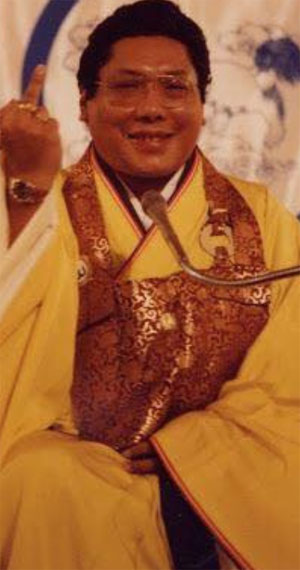

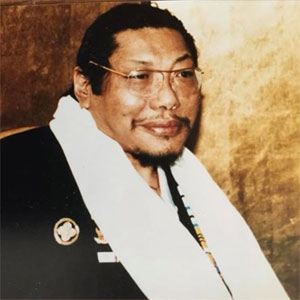
by Leslie Hays
2017
NOTICE: THIS WORK MAY BE PROTECTED BY COPYRIGHT
YOU ARE REQUIRED TO READ THE COPYRIGHT NOTICE AT THIS LINK BEFORE YOU READ THE FOLLOWING WORK, THAT IS AVAILABLE SOLELY FOR PRIVATE STUDY, SCHOLARSHIP OR RESEARCH PURSUANT TO 17 U.S.C. SECTION 107 AND 108. IN THE EVENT THAT THE LIBRARY DETERMINES THAT UNLAWFUL COPYING OF THIS WORK HAS OCCURRED, THE LIBRARY HAS THE RIGHT TO BLOCK THE I.P. ADDRESS AT WHICH THE UNLAWFUL COPYING APPEARED TO HAVE OCCURRED. THANK YOU FOR RESPECTING THE RIGHTS OF COPYRIGHT OWNERS.
The first time I met His Majesty Chögyam Trungpa Rincophe was at encampment in the late summer of 1983. I was attending a dathün (month long sitting practice) at Rocky Mountain Dharma Center. This retreat is supposed to be mostly silent, but I was never good at holding my tongue. During the retreat, some of my new friends and I plotted a raid on encampment, which was a military-style program that was simultaneously happening on the land. We decided to raid encampment and attempt to steal the flag. Our plan was simple: we could create a diversion and while the attention was on us, our cohorts would sneak around the perimeter and steal the flag. Three of us drove through the tori gates in a convertible blaring Michael Jackson’s Beat It while the rest tried to sneak around and steal the flag. We were all immediately caught and locked up in the stockade. CTR came by that night to check out the prisoners. I noticed that he flirted shamefully with all the women/girls who were in the lock-up and totally and completely ignored me.
But I really met CTR in the backyard wedding of sangha members in Boulder in late January of 1984. I had been prepped by the family I nannied for for weeks in advance of the wedding. It appeared to work because I caught CTR’s eye and he asked me to marry him the next day. Then there was so much activity! We had our charts read by Larry Laughlin who found the most “auspicious” day for our wedding. Given the tremendous constraints of marrying six women in a five months, there was some wiggle room with the dates. The first wedding I attended was Karen Lavin’s. Next was Valerie Lorig Sanford, which happened on May 10th. Then Lady Cynde Grieves married him on May 13, Wendy Friedman was on May 17th, I was the fifth on June 12th, Ciel followed on her 18th brithday, and then Agness had her wedding in December of 1985.
There was so much to be done -- especially for me as a new student who only completed through level four Shambhala training. I received stroke, lungta and werma transmission. I read Born in Tibet, and studied the Letter of the Golden Key Which fulfills desire, The Golden Dot, The Letter of the Black Ashe, Sacred World, the Practice of Warriorship, and Court Vision and Practice. I was on the fast track to learning and absorbing everything he’d ever created. I studied the texts themselves as well as the commentaries. Our ceremonies required correctly answering a direct question from CTR and the preceptor, who in my case was the regent. (Mine was the only ceremony with him as the preceptor -- people said I should be honored -- but I was not.) We were told to study the Six Ways of Ruling in particular, as it was rumored this would be one of the questions.
When I wasn’t with CTR, I was completing my tasks as a nanny. And I was introduced to the Shambhala lodge with a party in my honor. I attended Karen, Cynde, Wendy and Valerie’s ceremonies prior to mine. These all happened at the court in Boulder. We had dinners together where we were taught elocution by both Ashley Playfair and Carolyn Gimian. We had one dinner with CTR and the five of us Sangyum (Karen, Cynde, Wendy, Val and I), where we were served white fish with bones in it, green peas and white rice, and copious amounts of sake. We were learning how to eat like the British–holding our fork upside down in our left hand and our knife in the right to shovel the food onto the fork, not an easy task with that meal. During meals we usually played the qualities game, a parlor game CTR enjoyed.
One day I arrived at the court for a shift and I was told I was to receive another transmission from Marty Janowitz. I assumed this was to be like the others, perhaps he was giving me TGS transmission early. Marty told me this transmission was extremely sacred and was only known to a few close students. He then pulled out a vial filled with a white powdery substance. Marty told me it was ground up vitamin D or something. (I really can’t remember exactly what he said it was). He put a bit of it on the spoon and told me to rub it on my gums, which I did. It was not cocaine. It was part of our job description to always carry a vial of “Tabi” which was the code name for cocaine. Due to his paralysis, CTR only had the use of one hand, so when he called for tabi it was our job to go into the bathroom with him, keep him steady, help him get his penis out before he wet his pants and put the coke on a spoon for him to inhale. It was also our job to keep his nose clean, and as you can tell from the picture, we were not always successful. Later, when I went to the bathroom alone, I put some on my gums. It was definitely cocaine.
This is another secret I have kept for over 30 years. I can no longer keep it. I believe it is not of benefit to anyone to keep this secret anymore. I believe it’s important for the followers of Shambhala to know what really happened in the “inner circle” of the court. We all -- every one of us -- didn’t know how to say “no” to CTR. We were so busy tripping over each other to do his bidding that we never questioned why an enlightened mediation master would need copious amounts of cocaine and alcohol every day. We never questioned why he spoke of every woman or young girl in sexual terms. It was supposed to be a great honor to sleep with him. No one wondered if his sexual appetite for his female students might be unhealthy.
I started wondering about it shortly after Ciel’s suicide. Could this sexualized idea of women be unhealthy? Could this lack of boundaries eventually result in rage and self-hatred? Why did I think marrying a man with seven other wives, a serious drug addiction, alcoholism and suicidal tendencies shown as severe bulimia would be a good idea? I was 23 and vulnerable. And I said yes. Yes, I will do this strange thing. It was only later when I learned of power differentials and feminism that I truly understood how totally wrong it all was. And now I am triggered by all things Tibetan. I will never enter Karma Dzong again. It’s too painful to see the hero worship and the enshrinement of this deeply disturbed man. And for those of you who might have spent a few nights with him or more and feel they knew all there was to know about him, I ask you to dig deeper. And for those of you who never met him yet still follow his teachings, you might want to ask hard questions of those in the know.
The most shocking thing for me through this whole process of sharing my truth is the sheer number of people who are lying now, and denying that sexualized violence has a negative effect on women. This continued minimization of the real, undeniable scars that are left from sexual assault and harassment is shocking. Shambhala has had choices every step of the way since we have begun talking about the neglect and child rape and abuse that is the legacy CTR left his close students. And this deplorable view of women continues through his sons. Time’s Up Now.



